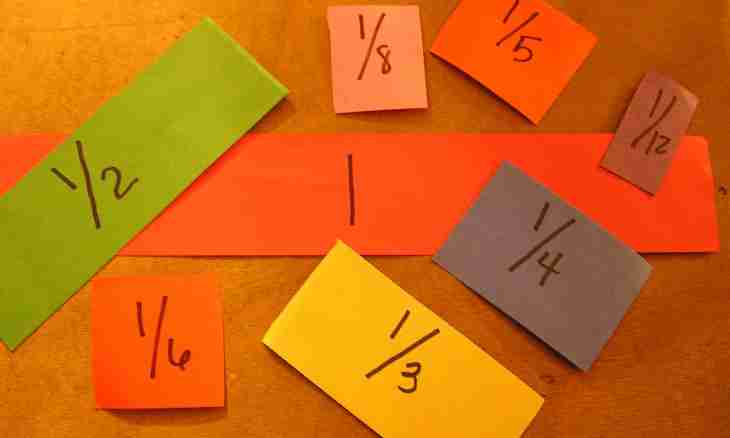The number made of a number of shares of unit in arithmetics, is called fraction. It, as a rule, consists of two parts - numerator and a denominator. Each of them is an integer. In literal sense the denominator shows into how many parts divided unit, and numerator - how many from these parts took.
It is required to you
- the manual on mathematics for the 5 and 6 classes
Instruction
1. It is accepted to divide common and decimal fractions, acquaintance to which begins at high school. Now there is no such field of knowledge where this concept would not be applied. Even in the history we speak the first quarter of the 17th century, and all understand at once that they mean 1600-1625. Also often it is necessary to face elementary actions over fractions and also their transformation from one look to another.
2. Reduction of fractions to a common denominator is, perhaps, the most important action over common fractions. It is a basis of carrying out all calculations. So, we will allow there are two fractions of a/b and with / d. Then, to reduce them to a common denominator, it is necessary to find a least common multiple (M) of numbers b and d, and further to increase numerator of the first fraction by (M/b), and numerator of the second on (M/d).
3. Comparison of fractions, one more important task. In order that to make it, reduce the set simple fractions to a common denominator and then compare numerators whose numerator will appear more, that fraction and more.
4. To execute addition or subtraction of common fractions, it is necessary to reduce them to a common denominator, and after to make the necessary mathematical operation with numerators of these fractions. The denominator remains without change. Let's allow it is necessary to subtract from a/b with / d. For this purpose it is required to find a least common multiple of the M b and d, and after to subtract another from one numerator, without changing at the same time a denominator: (a * (M/b) - (with * (M/d)) / M
5. It is rather simple to increase one fraction by another, for this purpose just it is necessary to multiply their numerators and denominators: (a/b) * (with / d)= (a*c)/(b*d) to divide one fraction into another, it is necessary to increase fraction of a dividend by fraction the return to a divider. (a/b) / (with / d)= should remind (a*d)/(b*c) that to receive the return fraction, it is necessary to trade numerator and a denominator places.
6. In order that from a common fraction to pass to decimal, it is necessary to divide numerator into a denominator. At the same time the result can be both final number and infinite. If from decimal fraction it is necessary to pass to ordinary, then spread out your number on I kiss hour and fractional, presenting the last in the form of natural number divided into ten in the corresponding degree.

